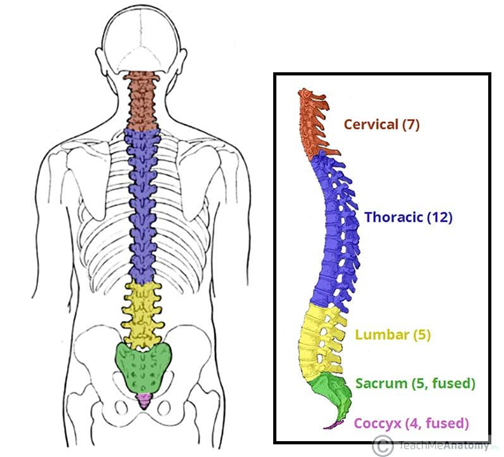Which of the following physiological changes in blood chemistry is an indication of acidosis?
Decrease in hydrogen ions
Decrease in carbon dioxide
Decrease in ketones
Decrease in bicarbonate ions
The Correct Answer is D
a. Decrease in hydrogen ions: A decrease in hydrogen ions (H+) would indicate a condition of alkalosis, not acidosis.
b. Decrease in carbon dioxide: A decrease in carbon dioxide (CO2) usually leads to respiratory alkalosis because CO2 is acidic in nature.
c. Decrease in ketones: Ketones are acidic compounds, and their decrease is not associated with acidosis. In fact, an increase in ketones can cause ketoacidosis.
d. Decrease in bicarbonate ions: Bicarbonate (HCO3-) is a base, and a decrease in its concentration can lead to metabolic acidosis, as it reduces the buffering capacity of the blood against excess H+.
Nursing Test Bank
Naxlex Comprehensive Predictor Exams
Related Questions
Correct Answer is B
Explanation
a: Cervical: 7, Thoracic: 14, Lumbar: 6 - This count for the thoracic vertebrae is incorrect; there are typically 12 thoracic vertebrae.
b. Cervical: 7, Thoracic: 12, Lumbar: 5-The vertebral column consists of cervical (neck), thoracic (upper back), lumbar (lower back), sacral, and coccygeal regions. The cervical region has 7 vertebrae, the thoracic region has 12, and the lumbar region has 5.

c: Cervical: & Thoracic: 12, Lumbar: 5, Sacral: 3 - This count for the cervical vertebrae is incorrect; there are typically 7 cervical vertebrae.
d: Cervical: & Thoracic: 14, Lumbar: Sacral: 4 - The counts for cervical and lumbar vertebrae are incorrect; there are typically 7 cervical vertebrae and 5 lumbar vertebrae.
Correct Answer is B
Explanation
a. The plasma membrane is composed of a bilayer of protein molecules: This is incorrect. The plasma membrane is primarily composed of a bilayer of phospholipids, with proteins interspersed within this bilayer.
b. The plasma membrane is selectively permeable: This is correct. The plasma membrane regulates the entry and exit of substances, allowing certain molecules to pass while restricting others.
c. The plasma membrane does not participate in cellular activities: This is incorrect. The plasma membrane is actively involved in various cellular activities, including signaling, transport, and maintaining homeostasis.
d. The plasma membrane receptors are specialized lipids: This is incorrect. Receptors on the plasma membrane are typically proteins, not lipids, which are involved in signal transduction and cellular communication.
Whether you are a student looking to ace your exams or a practicing nurse seeking to enhance your expertise , our nursing education contents will empower you with the confidence and competence to make a difference in the lives of patients and become a respected leader in the healthcare field.
Visit Naxlex, invest in your future and unlock endless possibilities with our unparalleled nursing education contents today
Report Wrong Answer on the Current Question
Do you disagree with the answer? If yes, what is your expected answer? Explain.
Kindly be descriptive with the issue you are facing.
